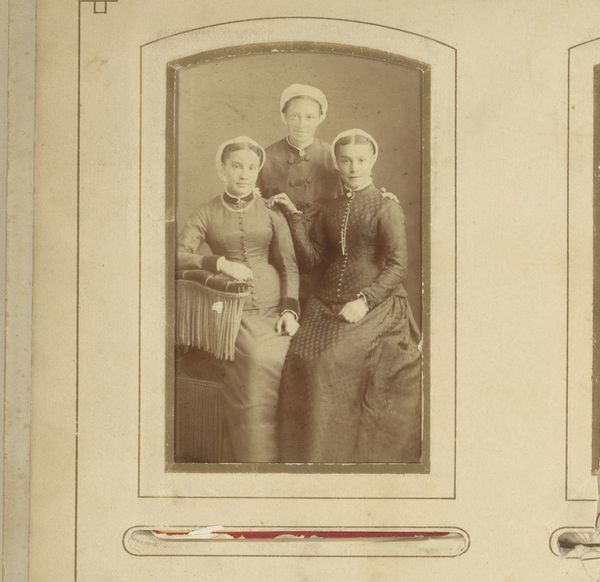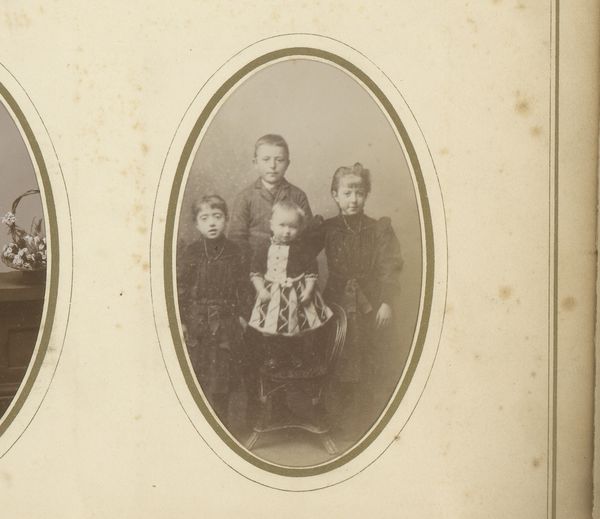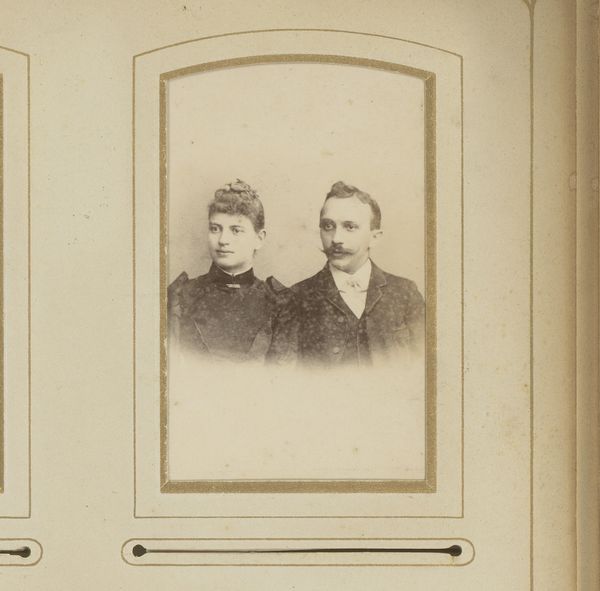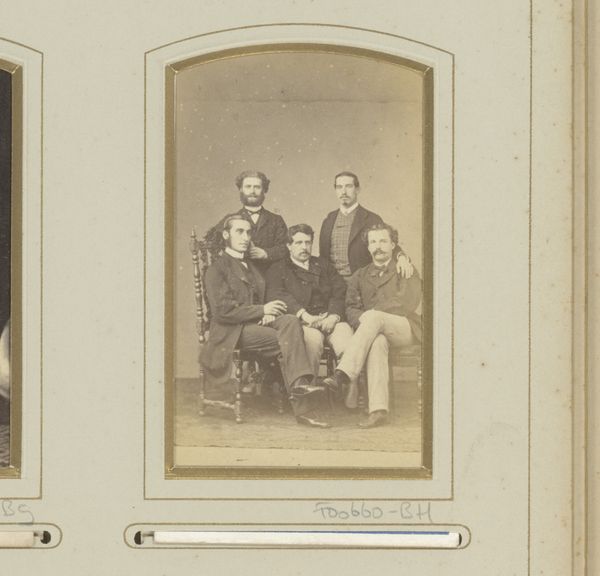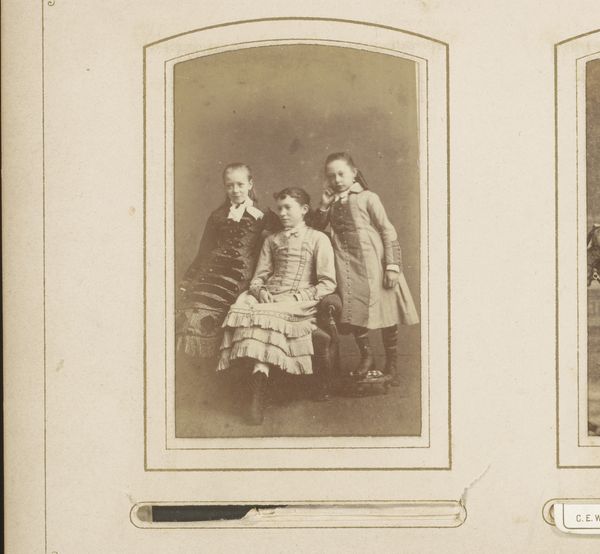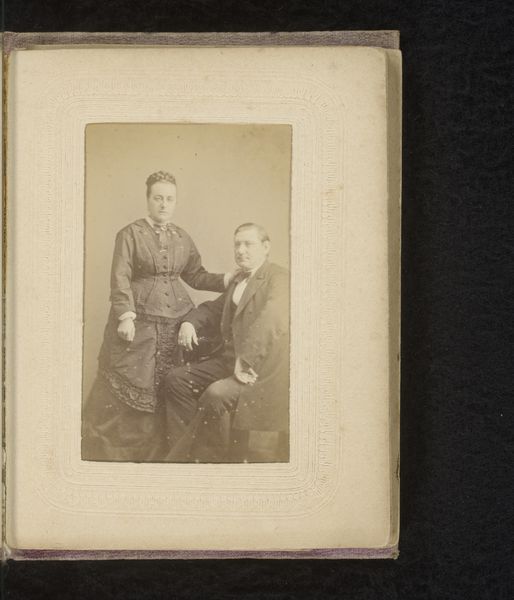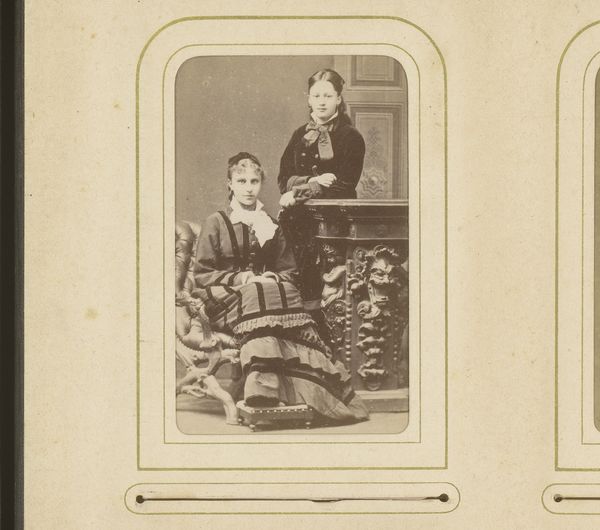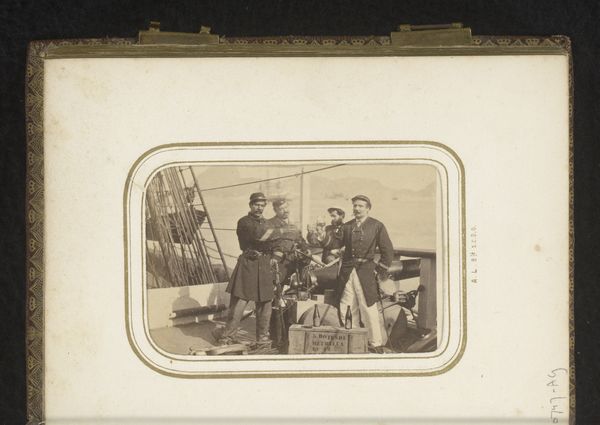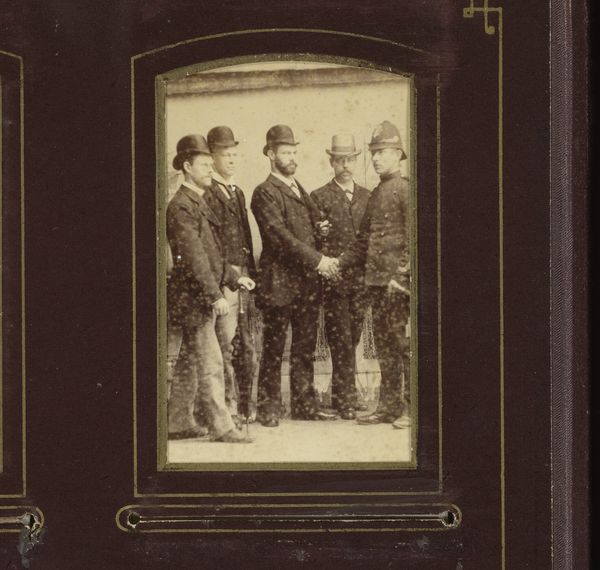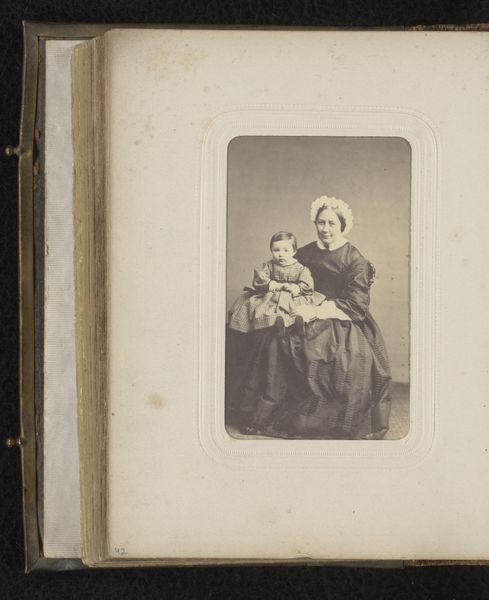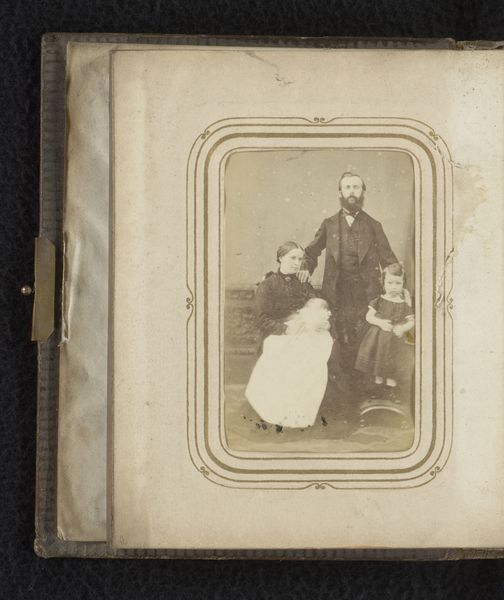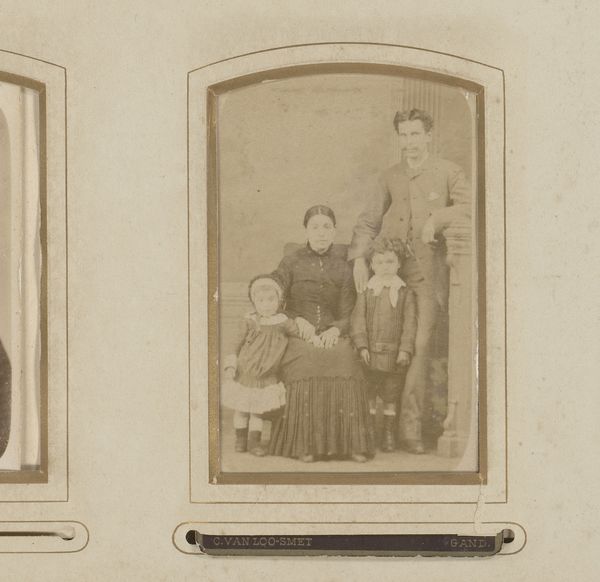
Portret van drie vrouwen, leunend op een boomstronk en staand bij een balustrade 1880 - 1901
0:00
0:00
photography
#
portrait
#
sculpture
#
photography
#
group-portraits
#
19th century
Dimensions: height 82 mm, width 50 mm
Copyright: Rijks Museum: Open Domain
Editor: Here we have Hendrik Boonstoppel’s photograph, "Portret van drie vrouwen, leunend op een boomstronk en staand bij een balustrade," dating from 1880 to 1901. The sepia tones and formal poses give it a very composed, almost serious, feeling. What do you see in this piece, especially given the context of its time? Curator: What strikes me is how this seemingly simple portrait subtly challenges notions of feminine identity in the late 19th century. Photography was becoming more accessible, allowing for a wider representation of sitters. These women, positioned with books and a hint of outdoor scenery, suggest an engagement with intellectual life and nature, aspects not always associated with women in that era. Editor: That's interesting. I hadn’t considered their posture as suggestive of intellectualism. But doesn’t the very formality of the portrait also reinforce societal expectations? Curator: Absolutely. There’s a tension. The clothing, the controlled setting, these speak to the constraints placed upon women. But within those constraints, there are hints of agency. Are they simply props or tools of self-expression, pushing gently against prescribed roles. How do we interpret the power dynamics at play when considering who had the means and motivations to commission such a portrait? Editor: So, it’s about looking for those small details that might hint at a more complex reality than the surface suggests? Curator: Precisely! It's about peeling back the layers to reveal the potential for resistance, self-definition, and quiet rebellion that might be present, even within the confines of a formal portrait. It allows us to rewrite historical perceptions of what it meant to be a woman at the time. Editor: That's really opened my eyes to the power of even seemingly straightforward images. Thanks for your insights. Curator: It’s a testament to the layered readings that are possible. Every piece of art can contribute to rewriting aspects of intersectional and inclusivity, so long as we choose to adopt an attitude that does the work to identify these pieces and expand on the narrative that has typically excluded the communities the works came from.
Comments
No comments
Be the first to comment and join the conversation on the ultimate creative platform.

